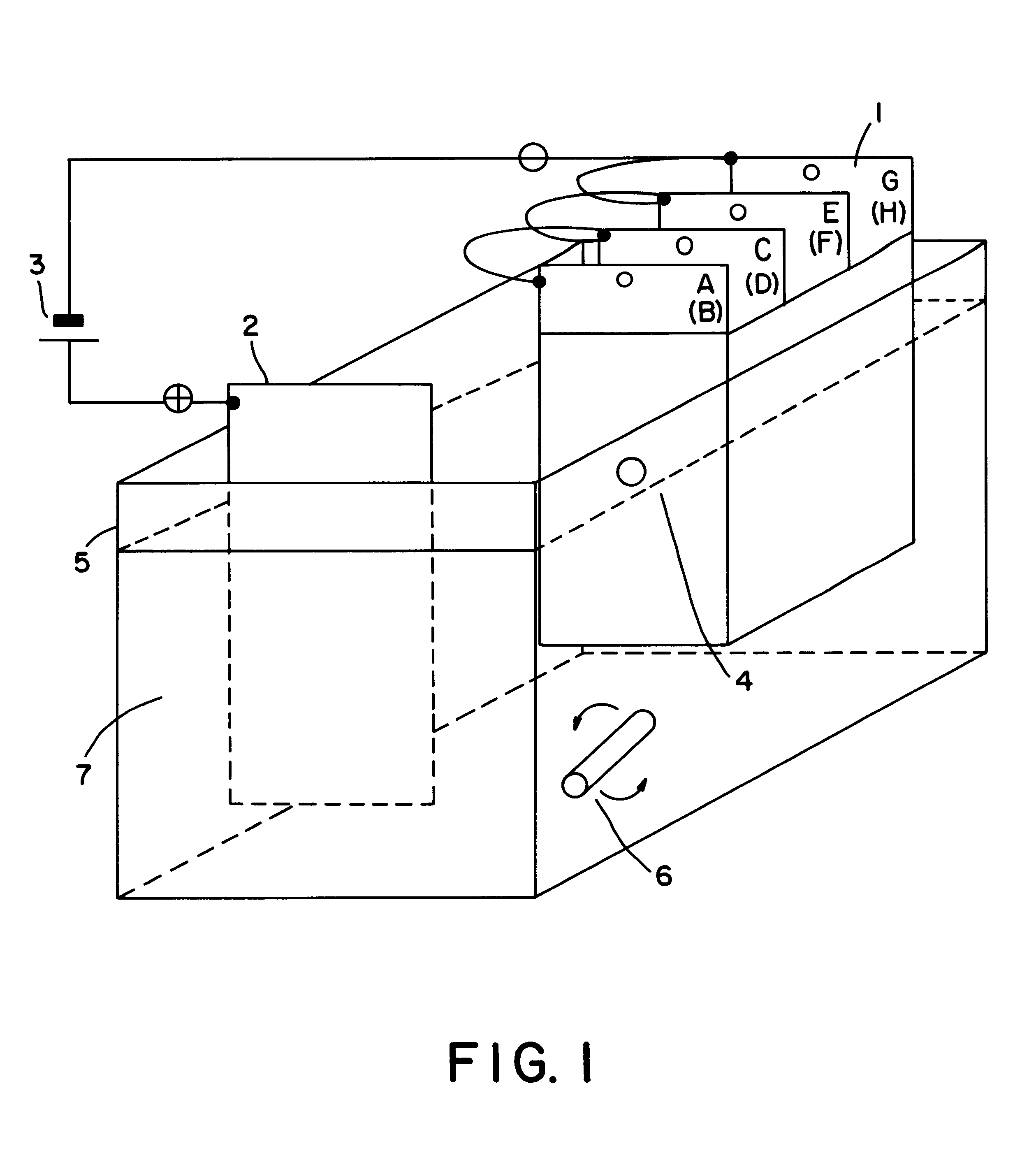Acetylide-form propargyl-containing epoxy resin composition for cationic electrocoating
a technology of cationic electrocoating and epoxy resin, which is applied in the direction of electrolytic coatings, paints, etc., can solve the problems of increased control burden, inability to secure desired performance characteristics, and inability to achieve design freedom
- Summary
- Abstract
- Description
- Claims
- Application Information
AI Technical Summary
Problems solved by technology
Method used
Image
Examples
production example 1
Production of a Sulfonium-, Propargyl- and Copper Acetylide-Containing Resin Composition for Cationic Electrocoating
A separable flask equipped with a stirrer, thermometer, nitrogen inlet tube and reflux condenser was charged with 100.0 g of a cresol novolak type epoxy resin with an epoxy equivalent of 200.4 (Epototo YDCN-701 (trademark), product of Toto Kasei), 23.6 g of propargyl alcohol and 0.3 g of dimethylbenzylamine, the temperature was raised to 105.degree. C., and the reaction was carried out for 3 hours to give a propargyl-containing resin composition with an epoxy equivalent of 1,580. Thereto was added 2.5 g of copper acetylacetonate, and the reaction was carried out at 90.degree. C. for 1.5 hours. It was confirmed by proton (1H) NMR that the terminal hydrogen of the propargyl group added had disappeared in part (corresponding to 14 millimoles per 100 grams of the nonvolatile matter in the resin composition). To this was added 10.6 g of 1-(2-hydroxyethylthio)-2,3-propanedio...
example 2
Production of Sulfonium-, Propargyl-, Long Chain Unsaturated Fatty Acid Residue- and Copper Acetylide Group-Containing Resin Composition for Cationic Electrocoating
A separable flask equipped with a stirrer, thermometer, nitrogen inlet tube and reflux condenser was charged with 100.0 g of a cresol novolak type epoxy resin with an epoxy equivalent of 200.4 (Epototo YDCN-701 (trademark), product of Toto Kasei), 13.5 g of propargyl alcohol and 0.2 g of dimethylbenzylamine. The temperature was raised to 105.degree. C. and the reaction was allowed to proceed for 1 hour to give a propargyl-containing resin composition with an epoxy equivalent of 445. To this was added 50.6 g of linolic acid and an additional 0.1 g portion of dimethylbenzylamine and the reaction was further allowed to proceed at the same temperature for 3 hours, to give a propargyl- and long chain unsaturated fatty acid residue-containing resin composition with an epoxy equivalent of 2,100. To this was added 3.2 g of copper...
example 3
Production of Sulfonium-, Propargyl-, Methacryloyl- and Copper Acetylide Group-Containing Resin Composition for Cationic Electrocoating
A separable flask equipped with a stirrer, thermometer, nitrogen inlet tube and reflux condenser was charged with 100.0 g of a cresol novolak type epoxy resin with an epoxy equivalent of 200.4 (Epototo YDCN-701 (trademark), product of Toto Kasei), 13.5 g of propargyl alcohol and 0.3 g of dimethylbenzylamine. The temperature was raised to 105.degree. C. and the reaction was allowed to proceed for 3 hours. The contents were cooled to 70.degree. C., and a mixture of 15.5 g of methacrylic acid and 0.1 g of hydroquinone was added dropwise over 30 minutes. Upon completion of dropping of the whole amount, the temperature was raised to 90.degree. C. and the reaction was allowed to proceed at that temperature for 2 hours to give a propargyl- and methacryloyl-containing resin composition with an epoxy equivalent of 1,655. To this was added 2.6 g of copper acet...
PUM
| Property | Measurement | Unit |
|---|---|---|
| Mass | aaaaa | aaaaa |
| Substance count | aaaaa | aaaaa |
| Substance count | aaaaa | aaaaa |
Abstract
Description
Claims
Application Information
 Login to View More
Login to View More - R&D
- Intellectual Property
- Life Sciences
- Materials
- Tech Scout
- Unparalleled Data Quality
- Higher Quality Content
- 60% Fewer Hallucinations
Browse by: Latest US Patents, China's latest patents, Technical Efficacy Thesaurus, Application Domain, Technology Topic, Popular Technical Reports.
© 2025 PatSnap. All rights reserved.Legal|Privacy policy|Modern Slavery Act Transparency Statement|Sitemap|About US| Contact US: help@patsnap.com


